Is Nvidia’s $1 Trillion AI Boom Here to Stay?
Nvidia’s stock has reached an unprecedented market capitalization of $1 trillion, an extraordinary feat that showcases the company’s unparalleled success and relentless pursuit of innovation. This achievement highlights the crucial role Nvidia has played in revolutionizing the artificial intelligence landscape and further cements its status as a frontrunner in the technology industry.
This article provides an overview of Nvidia and explores how the company is changing technology and industries.
Jump to . . .
- What is Artificial Intelligence?
- How is AI Disrupting Industries?
- Nvidia Company Overview
- How Nvidia is Revolutionizing Technologies and Industries
- Will Nvidia Maintain its Monopoly?
- Closing Thoughts
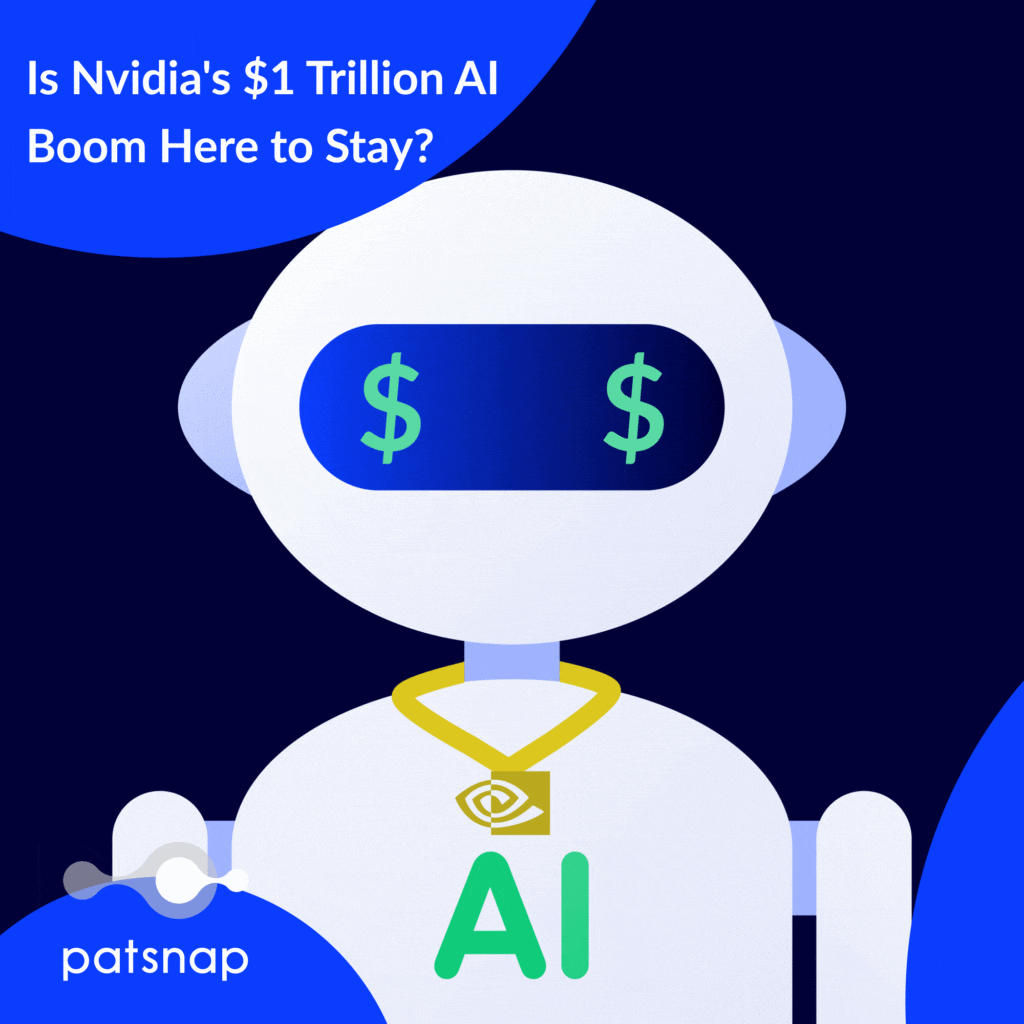
What is Artificial Intelligence?
Artificial intelligence (AI) encompasses the development and deployment of computer systems capable of performing tasks that traditionally required human intelligence. By creating algorithms and models, AI enables machines to autonomously perceive, reason, learn, and make decisions, replicating certain aspects of human cognitive abilities.
The fundamental objective of AI is to empower machines to efficiently process massive volumes of data, derive valuable insights, and execute tasks with precision. This field encompasses a wide range of techniques, including machine learning, natural language processing, computer vision, robotics, and more.
Within AI, machine learning plays a crucial role in teaching machines to learn from data and enhance their performance over time. By utilizing algorithms and statistical models, machines can analyze patterns, identify trends, and make predictions or decisions based on the provided data. This ability allows AI systems to adapt and evolve independently, augmenting their capacity to tackle complex tasks and solve problems.
The applications of AI are extensive and diverse, revolutionizing industries such as healthcare, finance, manufacturing, transportation, and beyond. It fuels advancements in autonomous vehicles, medical diagnosis, fraud detection, personalized recommendations, and numerous other areas.
However, it is important to acknowledge that AI remains a field in flux, subject to ongoing debates and challenges concerning ethics, privacy, and responsible usage. Striking a balance between technological progress and societal considerations becomes pivotal in harnessing the full potential of artificial intelligence in a manner that is both beneficial and ethical.
How is AI Disrupting Industries?
AI is causing significant disruption across various industries, transforming healthcare, finance, manufacturing, transportation, retail, and education.
In healthcare, AI is revolutionizing diagnosis, treatment, and patient care. Machine learning algorithms analyze vast medical data to identify patterns and personalize treatments. AI-powered imaging technologies aid in early disease detection, while virtual health assistants and chatbots provide 24/7 support. Robotic surgery systems assist surgeons with improved precision.
In finance, AI enhances fraud detection, risk assessment, and customer experience. Real-time machine learning algorithms detect and mitigate fraudulent activities, while chatbots and virtual assistants offer personalized financial advice. Algorithmic trading and robo-advisors utilize AI to analyze market trends, and automation streamlines back-office tasks.
In manufacturing, AI revolutionizes processes for greater efficiency, flexibility, and autonomy. Predictive maintenance systems prevent equipment failures, while AI-powered machine vision ensures product quality. Robotics and automation handle repetitive tasks, assembly, and logistics, boosting productivity.
In transportation, AI drives advancements in autonomous vehicles, traffic management, and logistics. Self-driving cars and trucks promise safer and efficient transport. AI algorithms optimize traffic flow and intelligent routing systems improve logistics, ensuring faster delivery of goods.
In retail, AI personalizes customer experiences, improves inventory management, and enhances marketing strategies. AI recommendation systems analyze customer behavior, while chatbots and virtual assistants provide instant support. AI algorithms forecast demand, optimize inventory, and streamline supply chains.
In education, AI enables personalized learning experiences and automates administrative tasks. Intelligent tutoring systems adapt content for tailored learning paths, and AI-powered grading systems automate assessments. Virtual reality and augmented reality technologies enhance immersive learning.
AI’s disruption across these industries is driven by its ability to analyze vast data, make informed decisions, and automate tasks. It improves efficiency, enhances customer experiences, and drives innovation, reshaping traditional business models and unlocking new possibilities.
Nvidia Company Overview
Since its establishment in 1993, Nvidia has swiftly risen to prominence within the technology industry, carving out a dominant position in the realms of graphics processing units (GPUs) and AI. While initially renowned for its groundbreaking graphics cards that revolutionized computer gaming, Nvidia has since expanded its reach and influence, establishing itself as a pivotal player across numerous sectors.
At the heart of Nvidia’s operations lies its role as a leading semiconductor company, specializing in the design and development of GPUs. These critical components are integral to a wide array of devices, including gaming consoles, personal computers, data centers, and autonomous vehicles. Leveraging the company’s GPUs, users can unlock exceptional graphical performance, facilitating immersive gaming experiences, delivering high-quality visuals, and enabling real-time rendering capabilities.
Yet, the true impact of Nvidia extends far beyond the gaming realm. By harnessing the immense power of its GPUs, the company has spearheaded advancements in AI and machine learning. Nvidia’s specialized hardware, software platforms, and development tools have seamlessly integrated into the development and deployment of AI applications across diverse industries.
However, Nvidia’s influence is not limited solely to technological contributions. Recognizing the value of collaboration, the company actively engages in partnerships with industry leaders, researchers, and startups to foster innovation and address critical challenges. These collaborations span various sectors, establishing a robust network of expertise and resources that propels ongoing advancements and drives the company’s continual growth.
How Nvidia is Revolutionizing Technology and Industries
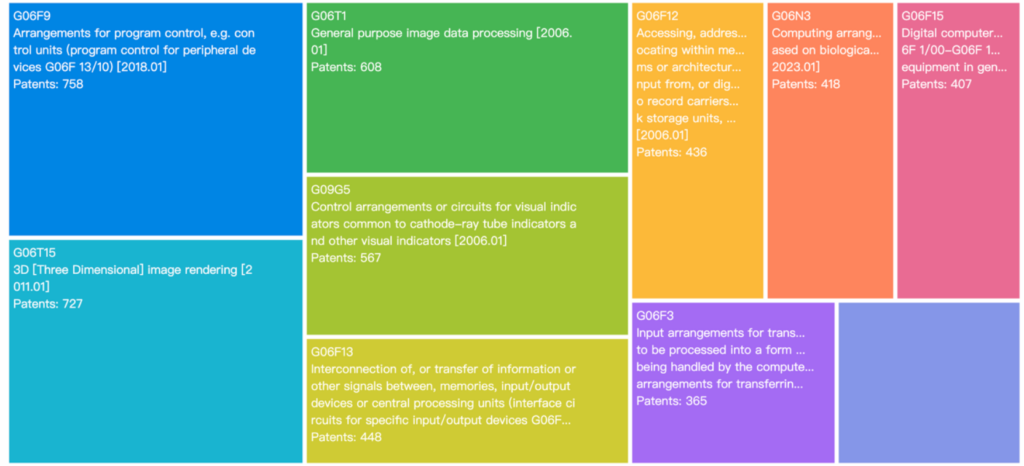
Nvidia’s revolutionary impact on technology and industries is evident in its advancements in AI and the transformative applications it enables.
In healthcare, its AI technologies are revolutionizing medical imaging analysis by significantly enhancing accuracy and efficiency. Nvidia’s GPUs, combined with AI algorithms, enable faster and more precise interpretation of medical images, aiding in early detection and diagnosis of diseases such as cancer.
By leveraging deep learning models, Nvidia’s solutions assist in drug discovery processes, accelerating the identification of potential treatments and optimizing the development of new drugs. Moreover, Nvidia’s AI technologies are paving the way for personalized medicine, as AI algorithms can analyze individual patient data to tailor treatment plans and predict patient responses to specific therapies.
In the domain of autonomous vehicles, Nvidia is at the forefront of driving advancements in perception, decision-making, and control systems.
The company’s powerful GPUs, coupled with AI platforms like the NVIDIA DRIVE platform, provide the computational capabilities required for real-time analysis of sensor data from autonomous vehicles. This enables the vehicles to accurately perceive their surroundings, make intelligent decisions, and navigate safely. Nvidia’s AI technologies also contribute to enhancing the overall safety of autonomous vehicles by continuously improving object detection, path planning, and collision avoidance systems.
Nvidia’s commitment to collaboration and partnerships is another key aspect of its revolutionary influence. By working closely with industry leaders, researchers, and startups, Nvidia fosters innovation and propels technological advancements.
One notable collaboration is Nvidia’s partnership with Mercedes-Benz to develop AI-powered autonomous driving systems for future vehicles. This collaboration combines Mercedes-Benz’s automotive expertise with Nvidia’s AI technology, shaping the future of transportation and driving the evolution of autonomous vehicles. Additionally, Nvidia collaborates with healthcare institutions, research organizations, and technology companies to develop AI-driven solutions that revolutionize healthcare and improve patient outcomes.
Will Nvidia Maintain Its Monopoly?
Elon Musk doesn’t think so.
In a recent Twitter exchange with Adam D’Angelo, CEO of Quora, the topic of the AI boom and Nvidia’s monopoly arose. D’Angelo mentioned that the shortage of GPUs and TPUs (tensor processing units) is causing limitations on product rollouts and model training, leading to an underestimation of the AI boom.
Musk agreed, acknowledging that the shortage is not readily visible, as the focus is often on Nvidia’s spike in price. He added that the development of other neural network accelerator chips is underway, indicating that Nvidia’s monopoly on large-scale training and inference may not last indefinitely.
While these insights from influential figures are thought-provoking, it’s essential to consider the broader market dynamics. Nvidia has undeniably established a strong position in the GPU market and has positioned itself as a leader in AI technologies. However, the technology landscape is dynamic, constantly evolving, and susceptible to various market forces.
As the image below shows, the top players in AI based on patents include IBM, Siemens AG, and Microsoft.
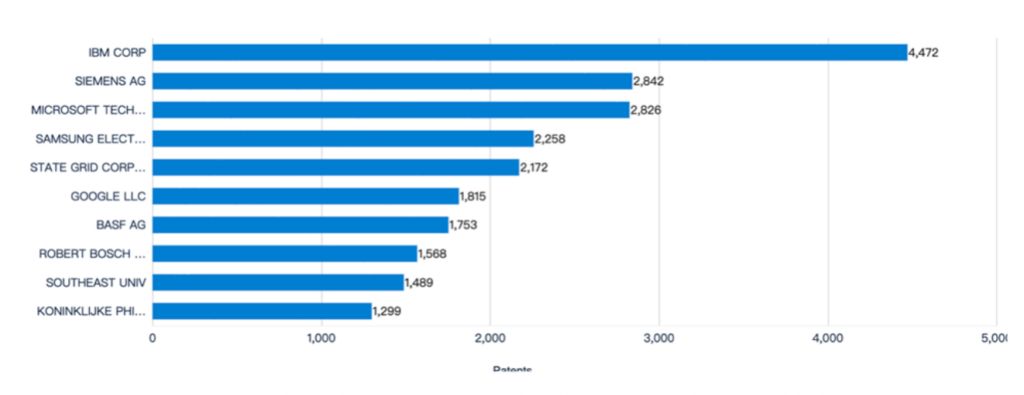
In the competitive niche of GPUs, Intel Corp and Nvidia emerge as the dominant industry players. With only 10 patents between them, these two companies have a strong focus on GPUs now. Now Nvidia has set the standard with using AI to its advantage, it may be more of a threat to Intel Corp for the top spot.
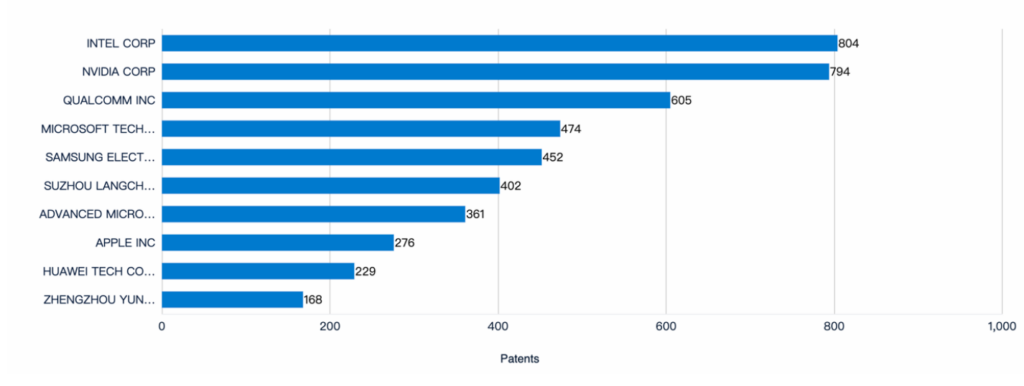
The patent application trend of five new entrants in the GPU space over the course of five years reveals interesting patterns.
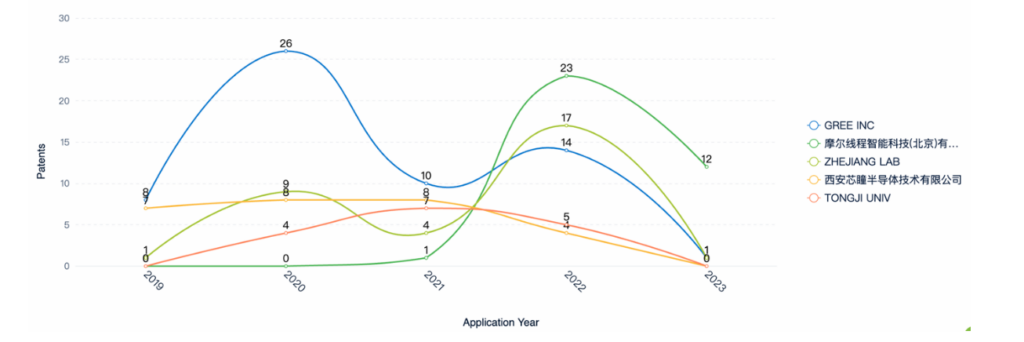
Notably, Gree Inc experienced a remarkable surge in 2020, surpassing all other new entrants by applying for 26 patents during that year. This marked a significant lead compared to its competitors at that time.
However, in 2022, Moore Thread Intelligent Technology Beijing Co., Ltd. emerged as the most active player, with a sudden spike of 23 patent applications after a period of relative inactivity in previous years. It is worth noting that a substantial portion of the new activity within the GPU space originates from the Asia-Pacific region, highlighting its growing influence in the industry.
Closing Thoughts:
As with any industry, competition can emerge from unexpected sources. Factors such as market trends, technological advancements, and the strategies of other companies all play a role in shaping the future of Nvidia’s market dominance.
Your recommended content
-
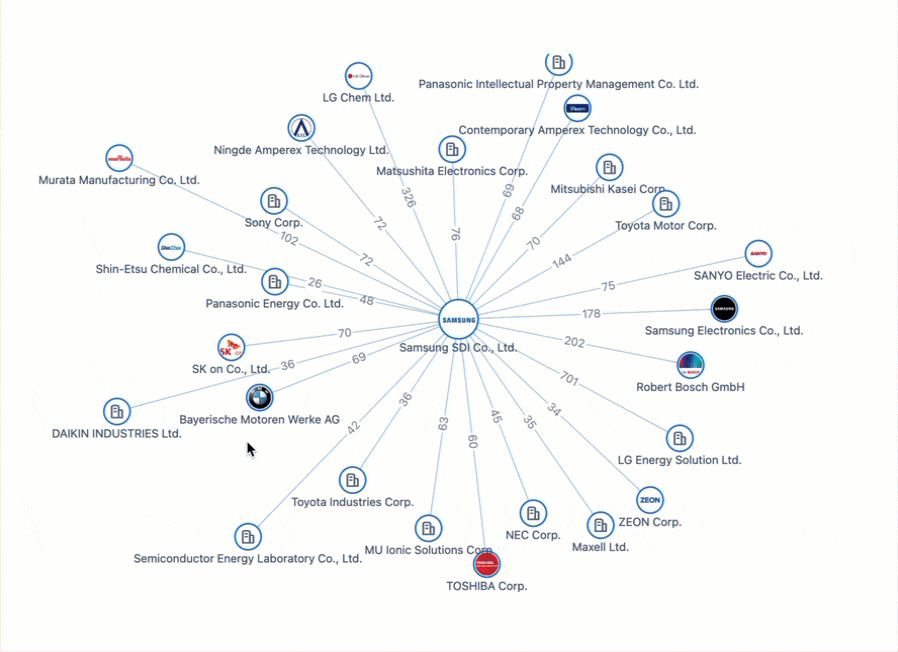
Powering the Future of Electric Vehicles: The Battle for Battery Innovation and Patents
Category: Article | Category: battery technology | Category: electric vehicle | Category: EV | Category: lithium ion | Category: lithium ion battery | Category: NEV | Category: new energy vehicles
Monday, April 22, 2024
In the ever-evolving landscape of innovation, the electric vehicle (EV) industry stands as a beacon of technological transformation. As we explore the patents propelling the EV revolution, Apple's venture serves as a poignant example of the challenges even industry giants face in this competitive arena. Join us on a journey through the global patent landscape, where the quest for superior power solutions unfolds, and where the true pioneers of the EV revolution are making their mark.
-

The People vs. AI: Who Owns Ideas in the Era of Generative Artificial Intelligence?
Category: AI era | Category: AI-driven creativity | Category: AI-generated creations | Category: Article | Category: copyright and patent rights | Category: digital innovation | Category: innovation | Category: intellectual property law | Category: legal implications | Category: OpenAI Sora | Category: patent law | Category: Research Tag | Category: Sora | Category: text-to-video generative AI | Category: who owns AI
Monday, April 22, 2024
OpenAI’s Sora software, a text-to-video generative AI model, recently made headlines showing a series of 1-paragraph prompts and some high-quality footage generated based on those prompts. It is a rightfully impressive showing, but it’s still too early to identify how IP law will be disrupted by generative AI. This editorial delves into the multifaceted landscape of Sora's impact, offering insights into the future of innovation and ownership in the AI era.
-

Patsnap Releases 2023 Global Innovation Report: The Brilliant Names to the Dynamic Landscape of Innovation
Category: Article | Category: eBook | Category: Research Tag | Category: Whitepaper
Wednesday, November 15, 2023
The Global Innovation 100 and Global Disruption 50 transcend individual entities, each representing a small innovation ecosystem with numerous subsidiaries. Through the innovation data of these companies, we gain insights into the characteristics, structures, and trends of global innovation.